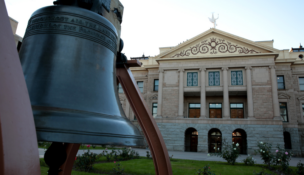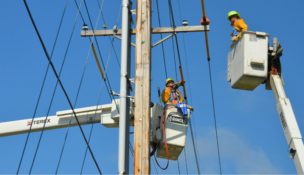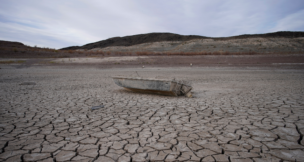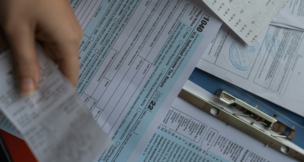Arizona moves to regulate greenhouse-gas tailpipe emissions
Arizona Capitol Reports Staff//December 21, 2007//[read_meter]
Arizona moves to regulate greenhouse-gas tailpipe emissions
Arizona Capitol Reports Staff//December 21, 2007//[read_meter]
Draft rules on restricting tailpipe greenhouse gases in Arizona are nearly ready, though it could be a case of hurry up and wait.
The state’s rules will mirror California’s and are expected to be in final form sometime this spring. But Arizona’s planned automotive-emissions rules won’t be implemented any time soon. They’re tied to California receiving approval for its own rules from the U.S. Environmental Protection Agency.
And that’s not happening. EPA administrator Stephen Johnson announced Dec. 19 the agency was denying a waiver California had requested two years ago.
Just the same, Arizona will move ahead with its own rules to cut greenhouse gases in cars and trucks, said Steven Owens, director of the Arizona Department of Environmental Quality.
“There’s been a bump in the road, but it was not unexpected,” Owens said Dec. 20.
The “clean-car” rules are included in recommendations made by a climate-change advisory group created by Gov. Janet Napolitano.
Arizona isn’t the only state seeking to cut automotive greenhouse gas emissions. Sixteen others have adopted or plan to adopt California standards.
The EPA’s decision comes down on the side of automakers, who have sued to block regulation of greenhouse gases in cars.
EPA administrator Johnson told reporters a national solution is needed to greenhouse gases and global warming, “not a confusing patchwork of state rules.”
But Owens said the rules — favored by more than a dozen states — would not be a patchwork.
“We would all be adopting the California standards. It’s not like you have 50 different vehicle emissions standards,” Owens said.
A spokesman for an automakers group earlier said the reality is more complicated, because the standards cover all vehicles — lumping cars and light trucks together. But trucks are generally less fuel-efficient than cars, said Wade Newton, spokesman for the Alliance of Automobile Manufacturers in Washington, D.C.
More fuel-efficient vehicles produce less in the way of greenhouse gases. Fifty-six percent of the vehicles registered in Arizona are light trucks and 44 percent are cars, he said.
“Passenger cars would have to get much higher mileage than in a state like California where it’s 50-50,” Newton said.
It’s an argument dismissed by Diane Brown, executive director of Arizona Public Interest Research Group (PIRG), a non-profit that advocates for consumer issues and the environment.
“The technology is there for them to move forward instead of stalling,” Brown said of automakers.
Widespread support among states, she added, could “lead to stronger standards federally.”
The California standards, Owens said, have not just spread to other states. They’ve gone international.
“A number of Canadian provinces have said they’re going to adopt the standards, and in fact, I think Quebec did,” he said.
And California itself had grown tired of waiting on the EPA. Gov. Arnold Schwarzenegger — acting on California’s behalf — sued the EPA in November to force a decision. Arizona joined a dozen other states as interveners. The suit was filed in federal court in Washington, D.C.
Another lawsuit
California got its decision — one that likely will lead to another lawsuit, Owens said. Schwarzenegger made it clear his state would take legal action if EPA rejected the wavier.
“I think it’s a safe assumption that we’ll be involved in litigation,” Owens said, adding the decision would be up to Napolitano and Attorney General Terry Goddard.
Other states will likely join in as well. Owens spoke to officials in other states following the decision. The reaction was across the board.
“Every state is outraged, but not surprised by what the EPA has done,” Owens said.
Under the Clean Air Act, the EPA sets emissions standards for automobiles. States ordinarily can’t set stricter standards. California is the exception.
“California had vehicle-emission standards and other air-quality laws and standards long before the federal government enacted the Clean Air Act and even established the EPA.” Owens said.
But to go its own way, California first needs an EPA waiver. It’s not a rare event. The EPA has granted some 50 waivers in 40 years, according to news reports. The Dec. 19 rejection was the first.
Had California received the waiver, other states could have adopted the federal standards or California’s. Arizona’s rules would have to mirror California’s, almost without exception.
“We don’t have any real flexibility from a technical perspective to change what California has done,” Owens said.
DEQ would have some authority, however, to determine when the rules should kick in. California’s would apply to vehicles beginning with model year 2009. Arizona rules would apply to the model year 2011 and later.
The proposed rules would mandate a 30-percent reduction in tailpipe greenhouse gases by 2020. In Arizona, automobiles contribute 40 percent of the total greenhouse-gas emissions, Owens said. Power plants that burn fossil fuels are another major source.
Greenhouse gases, particularly carbon dioxide, have been linked to global warming.
In refusing the waiver, Johnson said “climate change effects everyone regardless of where greenhouse gases occur, so California is not exclusive.”
But Owen said that same argument failed to convince the U.S. Supreme Court. Earlier this year, the court ruled against the EPA for failing to regulate greenhouse gases.
The court said that — as a global problem — “you have to start somewhere,” Owens said.
California and other states already regulate pollution that crosses state lines, he added.
But reducing greenhouse gases in autos doesn’t just fight global warming, Owens said. There’s a side benefit.
“In the long run, it’s going to save the consumer a lot of money,” he said.
Cutting greenhouse gas emissions makes for better gas mileage.
Better mileage! Less pollution!
As it happens, the question about what the rules actually do — save gasoline or cut greenhouse gases — lies at the heart of lawsuits filed by Alliance of Automakers and other plaintiffs.
“The only way to reduce the amount of greenhouse-gas emissions is to reduce the amount of fuel that an automobile burns,” said Newton, the alliance spokesman.
Automakers contend the new rules are actually fuel-efficiency standards, not air-quality standards. And fuel ratings fall under the purview of Congress.
Newton pointed out that Congress just passed an energy bill calling for higher gas mileage. President Bush signed the bill into law Dec. 19.
“We really feel that we have a 50-state plan,” Newton said.
EPA’s Johnson cited the new energy law, saying it did away with the need for a separate emissions rule.
Newton agreed. He said the law’s requirement for better fuel-economy sets a less rigid timetable than California’s rule — a timetable with which carmakers can reasonably comply.
But Owens said the emissions standards and fuel economy are apples and oranges.
“It’s really an excuse the EPA came up with … to drag this out as long as they can until this administration goes out of office,” he said.
Brown of PIRG added the clean-car rules speak directly to tailpipe emissions, she said.
“The clean-cars program regulates how much pollution a fleet of cars can emit,” Brown said. “The program does not regulate fuel economy.”
While EPA bought into the argument — that limiting carbon dioxide is a matter of fuel-economy — it failed to co
nvince two federal judges. Automakers lost lawsuits filed against California and Vermont. The alliance plans to appeal the Vermont decision. Whether to appeal the California case — which the judge dismissed — hasn’t been decided, Newton said. A similar lawsuit is pending against Rhode Island.
In Arizona, after DEQ officials complete the draft rules, the public will have 30 days to comment.
The next step is approval by the Governor’s Regulatory Review Council. The final rules could be on the books by spring. But whether they go into effect could depend on the outcome of any more lawsuits against the EPA. Or, Owens said, on a change in administration in 2009.
















